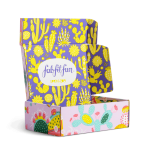Imagine returning to your hotel room after a long day of meetings or sightseeing, stomach rumbling, only to discover a beautifully packaged paper box waiting on your desk. This isn’t just another room service meal—it’s an experience, thoughtfully contained within the humble yet revolutionary hotel food paper box. Across the hospitality industry, a quiet transformation is occurring, one sustainable container at a time, changing how guests experience hotel dining while significantly reducing environmental impact.
The traditional room service trolley with its clattering silver domes and plastic-covered plates is gradually making way for more practical, eco-friendly alternatives. Hotel food paper boxes represent more than just a packaging solution—they embody a new philosophy in hospitality that prioritizes convenience, sustainability, and aesthetic appeal. These containers have evolved from simple cardboard takeout boxes to sophisticated packaging systems designed specifically for the unique needs of hotel guests who might be dining in their rooms, by the pool, or even taking their meals on the go.
What makes these paper boxes particularly remarkable is their versatility. Modern hotel food paper boxes feature clever compartmentalization that keeps different food items separated, preventing sogginess and maintaining optimal temperature. The materials used are often grease-resistant and microwave-safe, allowing guests to enjoy their meals at their preferred temperature without transferring food to other containers. Some luxury hotels have even incorporated insulating layers that keep hot foods warm and cold items chilled for extended periods, ensuring that every bite tastes as the chef intended.
From an environmental perspective, the shift toward paper-based packaging represents a significant step forward for the hospitality industry. Unlike plastic containers that can take centuries to decompose, high-quality hotel food paper boxes are typically made from recycled materials and are fully biodegradable or compostable. Many hotels proudly display certification logos indicating their packaging comes from sustainably managed forests or features post-consumer recycled content. This commitment to sustainability resonates strongly with today’s environmentally conscious travelers, who increasingly factor ecological considerations into their hotel selection process.
The design possibilities with paper packaging have expanded dramatically in recent years. Hotels now use these boxes as branding canvases, printing their logos, artistic designs, or even local cultural motifs that give guests a sense of place. The unboxing experience itself has become part of the hotel’s storytelling—opening a beautifully designed paper box can feel like unwrapping a gift, enhancing the overall dining experience. Some establishments have taken this further by including QR codes that lead to information about the meal’s ingredients, the chef’s inspiration, or even pairing suggestions.
Practicality remains a key advantage of hotel food paper boxes. Their stackable design makes storage efficient for hotels, while their lightweight nature reduces transportation costs and energy consumption. For guests, the convenience of having a self-contained meal system that requires minimal cleanup is invaluable, especially for business travelers with limited time or families managing multiple schedules. The containers can easily be folded flat after use for tidy disposal, eliminating the clutter that often accompanies traditional room service.
As the hospitality industry continues to adapt to changing guest expectations and environmental regulations, hotel food paper boxes are becoming increasingly sophisticated. We’re seeing innovations like embedded seed paper that guests can plant after use, boxes with built-in utensil holders, and even smart packaging that changes color to indicate when food has reached its ideal temperature. These advancements demonstrate how a simple concept can evolve to meet the complex demands of modern travelers while maintaining environmental responsibility.
The economic benefits for hotels shouldn’t be overlooked either. While high-quality paper packaging may have a slightly higher upfront cost than some alternatives, the long-term savings in waste management and the positive impact on brand perception make it a wise investment. Additionally, the compact nature of flat-packed paper boxes reduces storage space requirements, allowing hotels to utilize valuable real estate more efficiently.
Guest feedback has been overwhelmingly positive regarding the transition to paper-based food packaging. Travelers appreciate the reduced environmental impact and often comment on how the thoughtful design enhances their dining experience. The tactile quality of paper, the absence of plastic taste transfer, and the overall presentation all contribute to higher satisfaction ratings. For hotels, this translates to repeat business and positive reviews—essential currency in the competitive hospitality landscape.
Looking ahead, the evolution of hotel food paper boxes shows no signs of slowing. We can anticipate further innovations in material science, perhaps incorporating agricultural waste products or developing even more effective barrier coatings that maintain food quality while ensuring complete compostability. The integration of technology will likely continue, with packages potentially including NFC chips for easy reordering or augmented reality experiences related to the hotel’s brand story.
The humble hotel food paper box has indeed come a long way from being merely a container to becoming an integral part of the guest experience. It represents where practicality meets sustainability, where design enhances functionality, and where small changes collectively make a significant environmental difference. The next time you find one of these thoughtfully designed packages in your hotel room, take a moment to appreciate the quiet revolution it represents—proof that sometimes, the most impactful innovations come in the simplest packages.




Leave a Message